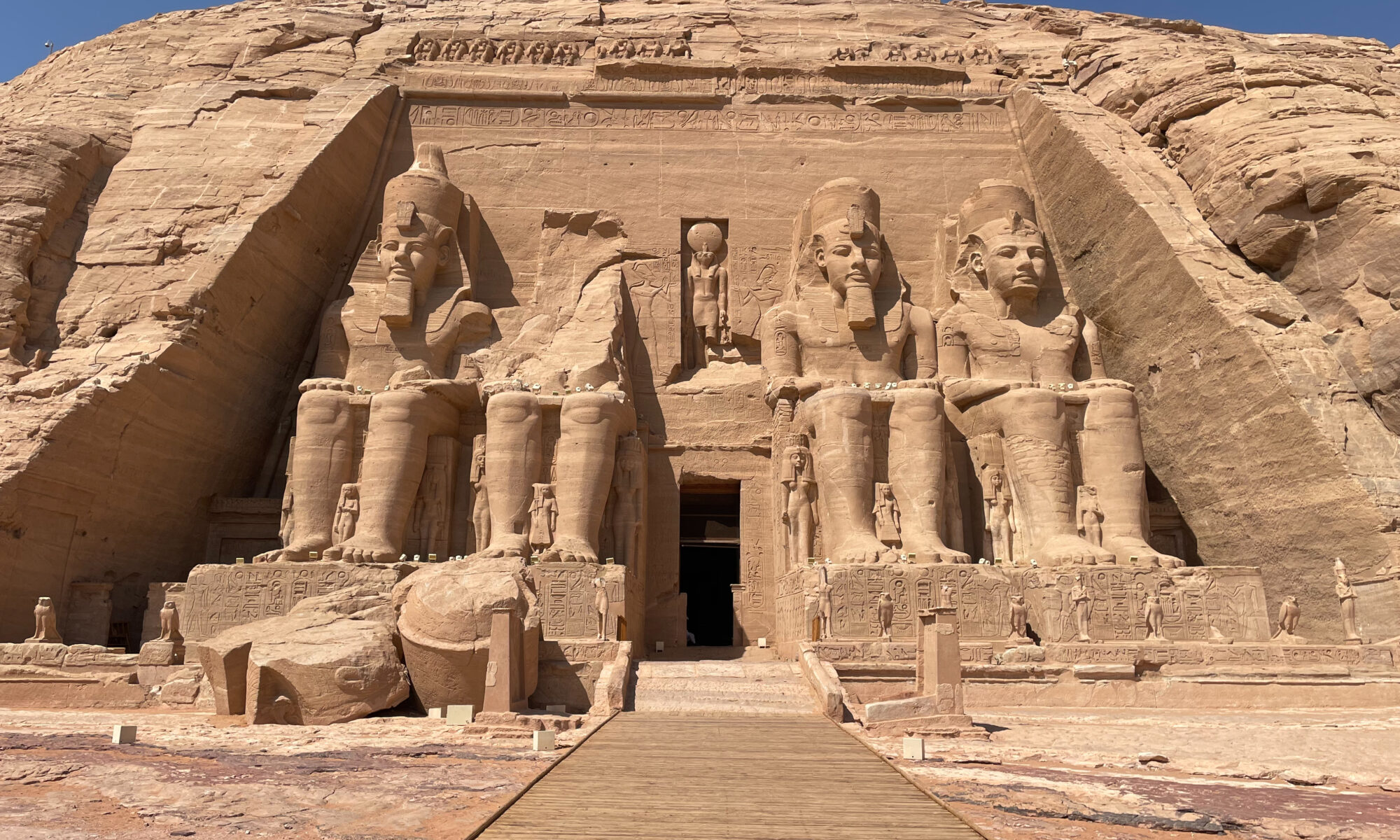We fought off the heat, and more terrifying influencers, to see the temple of Ramses the Great at Abu Simbel as our last stop in Egypt.
The Great Temple of Abu Simbel was built during the reign of Ramesses the Great around 1265 BC. In 1968, the entire temple was relocated due to the creation of Lake Nasser. And by relocated this means they had to dissemble the entire temple (inside and out) piece by piece, and move it to the new location. I like how our guide called this the second miracle of Abu Simbel – the first being the actually building of the temples by the ancient Egyptians.
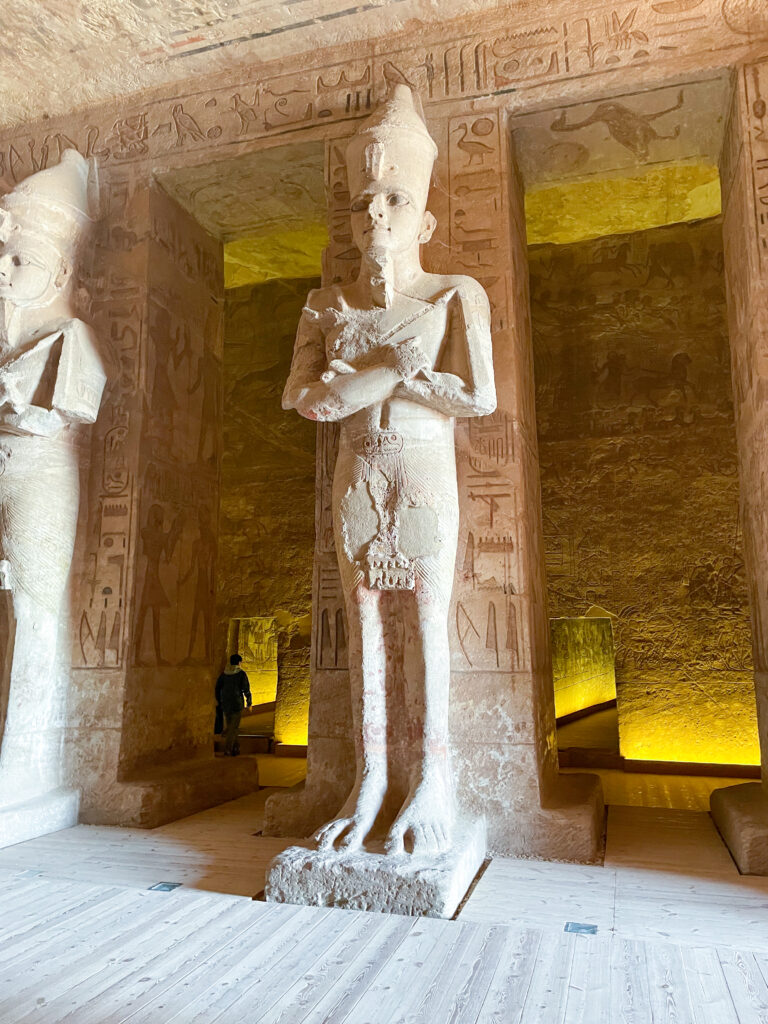
Everything about this temple is larger than life – including the man it was dedicated to. The entrance is dominated by four massive statues of Ramses II seated. The hypostyle hall contains eight huge statues of the deified Ramses II. Connecting from the hypostyle hall are multiple offering rooms.
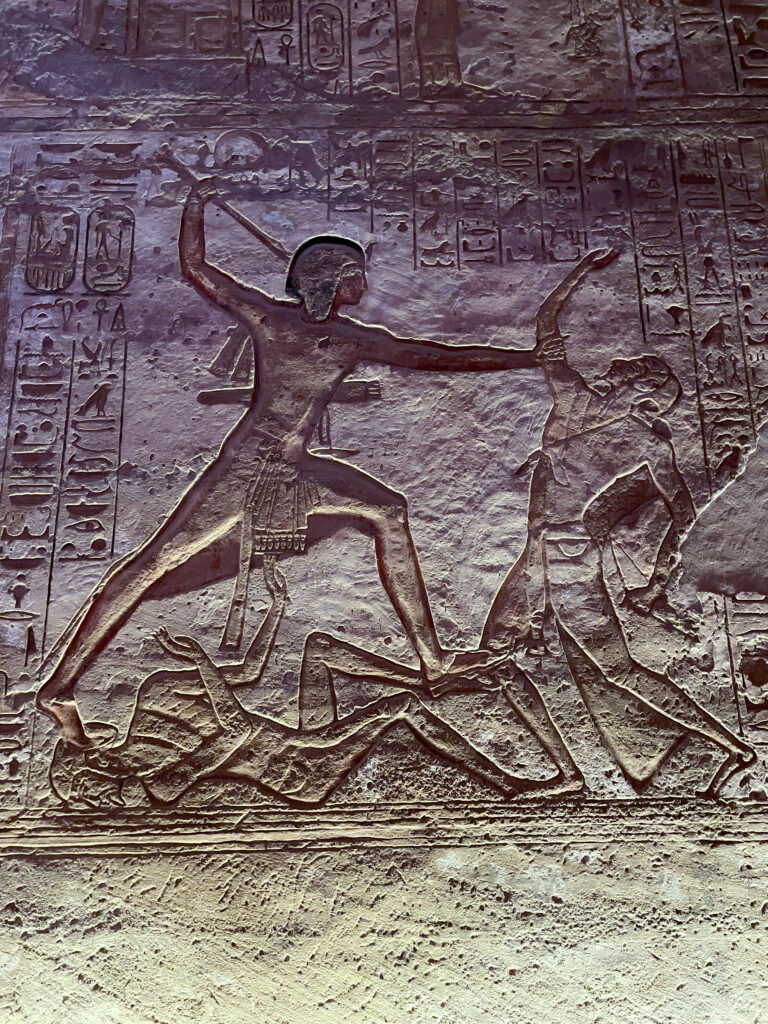
The imagery inside the temple depict the life of Ramses II. There are scenes of war and conquest as well as showing Ramses II deified. In fact, one image shows the mortal Ramses II giving an offering to the deified Ramses II – he definitely had a high opinion of himself!
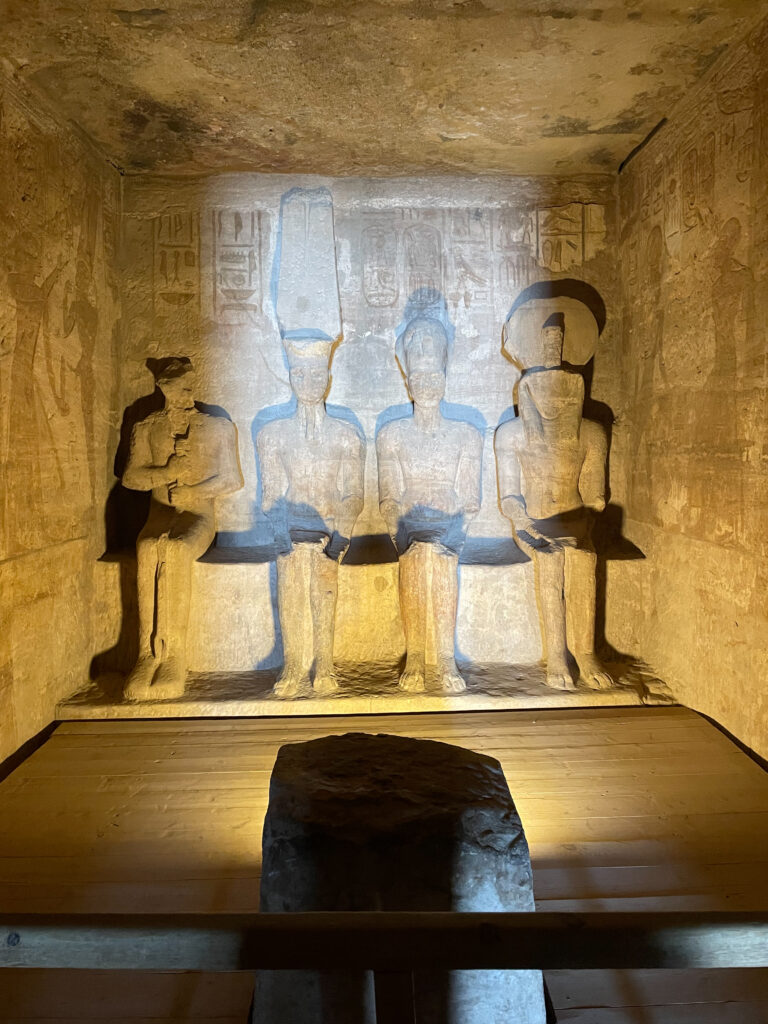
Two days every year, October 22 and February 22, the sun shines directly into the sanctuary illuminating three of the statues – Amun-Ra, the deified Ramses II, and Ra-Horakhty. The fourth statue, Ptah, remains in the darkness because he is associated with the underworld and always remains in darkness. The two days are believed to be his birthday and coronation.
Small Temple of Nefertari
Just next to the Great Temple is a temple dedicated to Hathor and Ramses II wife, Nefertari. While this temple is called the Small Temple, it is also very large. Just as we saw at her tomb in the Valley of the Queens, the incredible craftsmanship demonstrate how much Ramses II must have loved Nefertari- even if he is known to have had over 150 wives. One example of this is how her statues at the entrance stand just as tall as Ramses II.
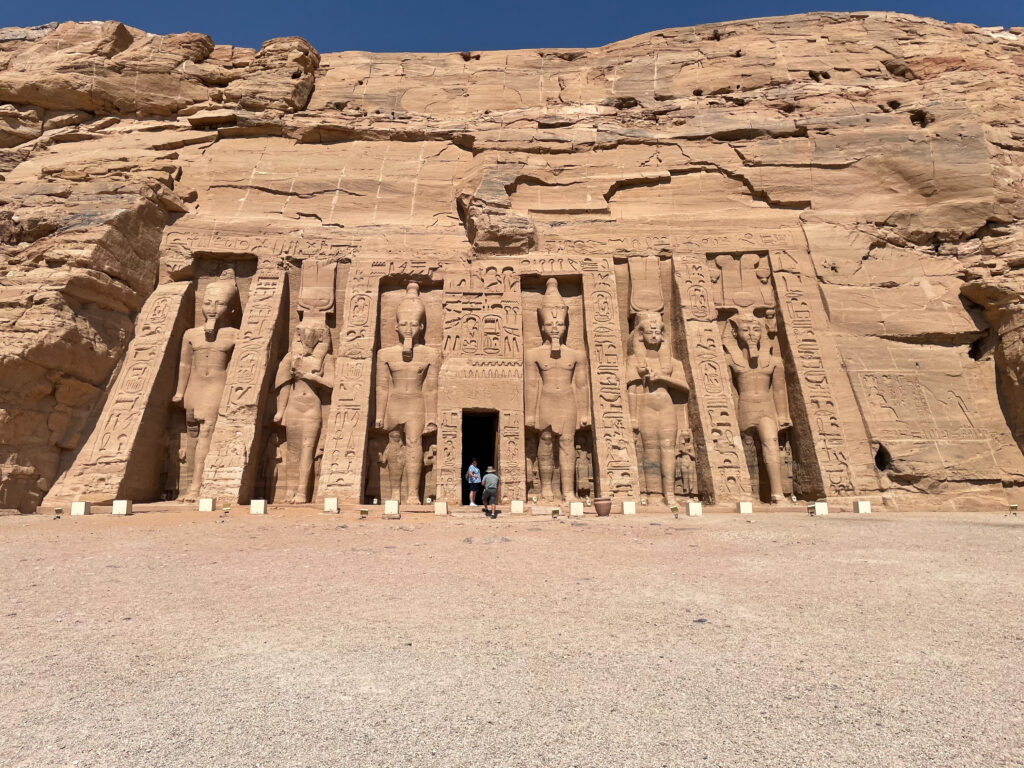
The inside of the temple is much softer, depicting scenes of flowers being offered, or music being played to the god of love and dance (among other things) Hathor. Even the colors appeared to be less harsh than what was in the Great Temple.
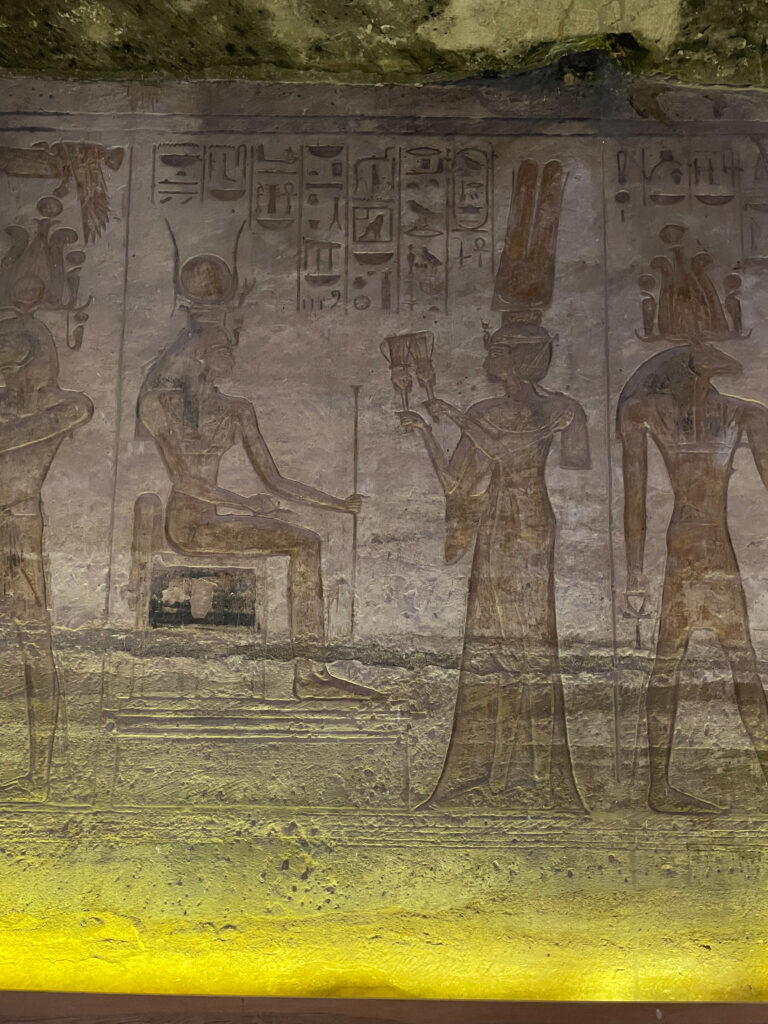
At the end of our tour, our guide asked us which temple we liked more. She said she liked the Small Temple more, and I think I would have to agree. While the Great Temple was impressive, the Small Temple was more tranquil and felt more like a temple, and less like a public relations monument.
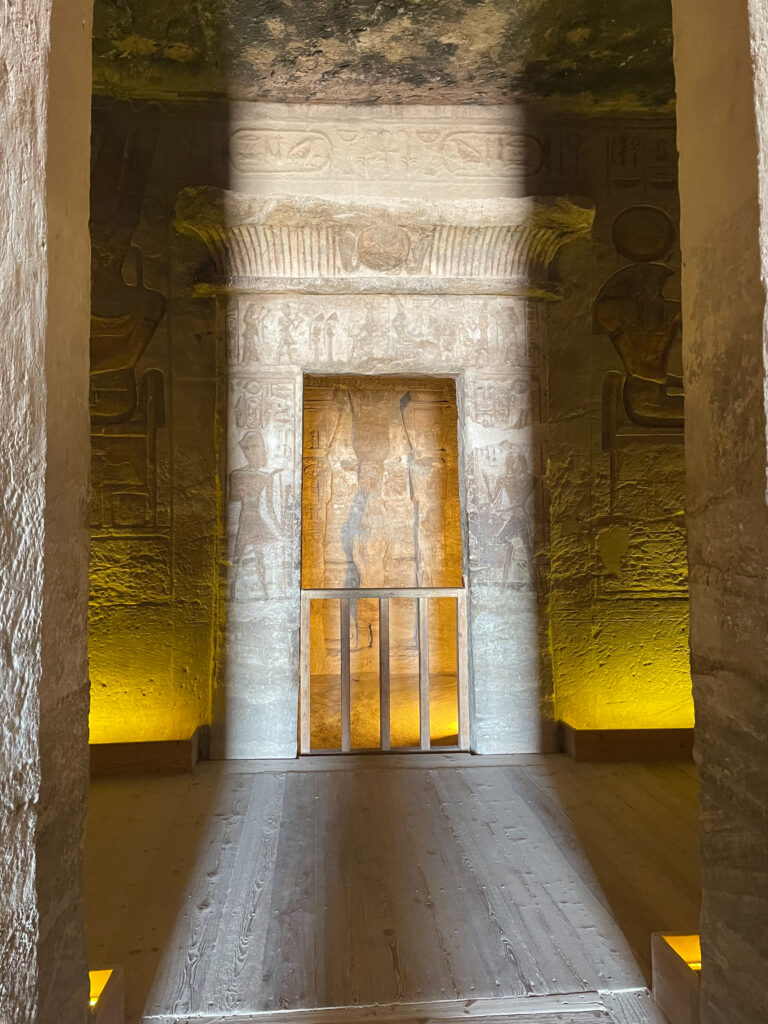
Abu Simbel was a fitting way to end our trip around Egypt. The Great Temple was as impressive as anything we saw (maybe excepting the Great Pyramid), while the Small Temple was beautiful and serene.

